Janitor AI vs. Open AI today I when thinking of the word AI, the concept of open AI versus revolutionary generative AI comes to mind. ChatGPT is also a much talked about concept in the world of AI. Janitor AI and Open AI are popular inventions in the world of artificial intelligence. Janitor AI and Open AI have different features, and Janitor AI and OpenAI have different uses. Are you aware from what is Janitor ai?
Both Janitor AI and Open AI have different meanings. The invention of artificial intelligence has brought about a radical change in the way every human being lives and works. In today's article I would like to discuss with you the topic of Janitor AI VS Open AI. I would like to draw your attention to the legal aspects of Janitor AI VS Open AI.
If you need detailed information about the legal aspects of Janitor AI then you can contact us. And can increase your legal understanding and awareness of Janitor AI and Open AI. Let's start the topic discussion with you. I hope this article will be useful and helpful to you.
" Also Read-https://askbylaw.com/Catagory/what-is-an-ai-trade-secrets/"
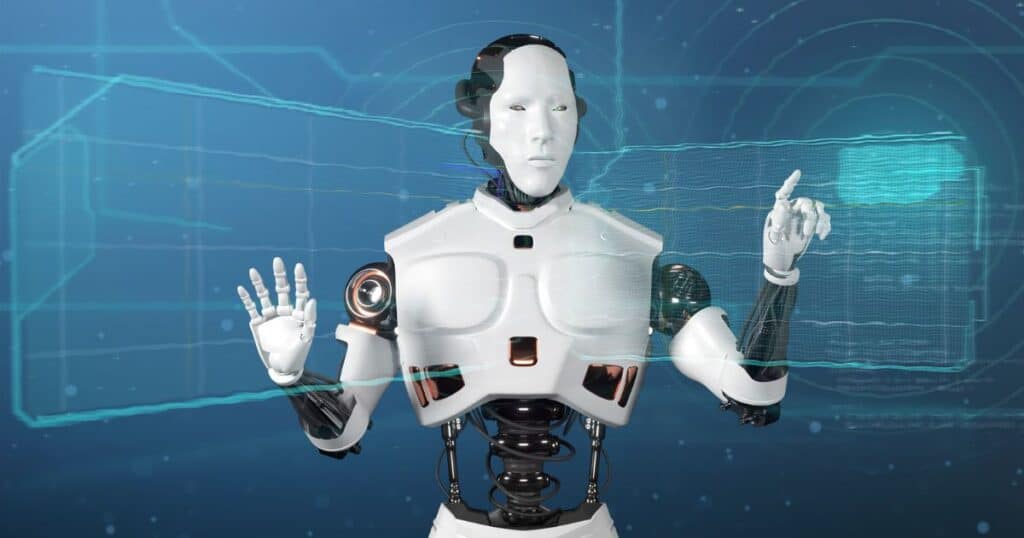
Also Read- https://askbylaw.com/Catagory/what-is-an-ai-law-a-1/
| FEATURES | JANITOR AI | OPEN AI |
| Legal Knowledge base | Legal awareness, accessibility and IP support | General-Purpose artificial intelligence and research with development |
| Legal Services | Legal research assistance and contract review guidance and IP registration support, Legal education modules. | Not exclusive design for legal Services need |
| Cost | Freemium model with basic features and paid plans for additional functionalities | Free version for limited futures and Pay-as-you go pricing based on usage |
| Data Security | Focus on data privacy and security | Adheres to general data security and practices |
| Targeted Audience | Individual, Small businesses, Eucational institutes and professionals | Researcher and developers, businesses for various application |
| Tailored for legal needs | Janitor Ai excels in providing legal information and resources. Its knowledge base is specifically designed for legal concepts, making it easier to navigate complex legal topic. | -OpenAI is a much broader AI Platform offering capabilities beyond the legal domain. it can be use various task like creative writing, code generation, and also scientific research. -OpenAI provide a wider range of advanced featured like text-to-code generation and large language models, appealing to developers and researchers. -OpenAi allows for more customisation in terms of model selection and programing application |
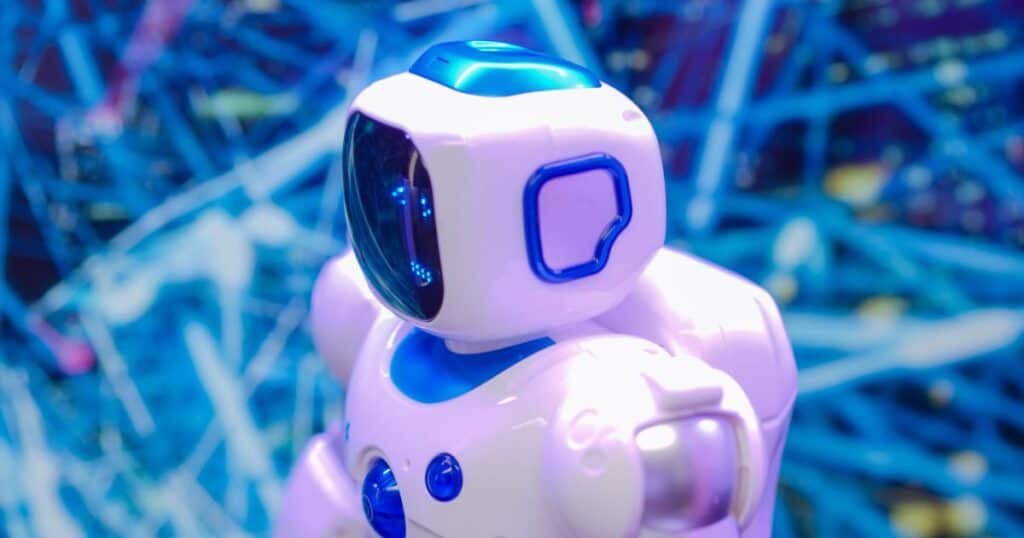
| Janitor AI | Open AI | |
| Data Privacy and Security | Data Collection and Use: Janitor AI collects user data for Service improvement, Personalisation, and analytics, Its important to review their privacy policy to understand what data is collected and how it use. User consent: They must ensure that users are informed and consent to data collection especially sensitive data in compliance with GDPR or CCPA if applicable. Data Security: The company can implement robust security measures to protect user data from branches and authorised access | Data Collection and Use: OpenAI collects user data to enhance its models and services. Their privacy policy outlines the types of data collection and its usage. User consent: OpenAI is committed to obtaining user consent for data collection, adhering to GDPR and other policy laws. Data Security: OpenAI employs advanced security protocols to safeguard user data, focusing on preventing data branches and unauthorised access. |
| Intellectual Property (IP) | User-Generated Content: Janitor Ai must clarify ownership rights over user-generated content and IP rights the company may claim. Third-party Content: Ensure that any third-party content used within the platform complies with licencing agreements and IP law. | Model Output: OpenAI’s policies address the ownership of content generated by its AI models, stating that users generally own the outputs they generate. Licencing: OpenAI adheres to strict licencing agreements for the use within the platform complies with licencing agreements and IP laws. |
| Liability and Compliance | Legal Liabilities: Janitor AI should outline the extent of its liability for errors, data loss, and misuse of the services in its terms of service. Regulatory compliances: Must comply with relevant regulations, sch as GDPR for data protection, and industry-specific laws if applicable. | Legal Liabilities: OpenAI provided detailed terms of service that limit its liability and specify the conditions under which the service is provided. Regulatory compliances: OpenAI adheres to global regulation including GDPR and CCPA. Ensuring compliance with data protection and privacy laws. |
| Ethical Considerations | AI Ethics: Janitor AI should implement ethical guidelines for AI use focusing on preventing bias, discrimination and misuse. Transparency: Ensure transparency in AI decision-Making processes and provide users with explanation of how the AI operates. | AI Ethics: OpenAi is committed to ethical AI development actively researching and addressing issues of bias, discrimination and misuse. Transparency: OpenAI promotes transparency in its operations and AI models providing extensive documentation and research findings to the public. |
| User Rights and Access | Right to access and delete data: Users should have the right to access their data and request to dilatation in accordance with privacy of law. Transparency: Clear communication about users rights and how to exercise them is crucial. | Right to access and delete data: OpenAI respects users rights to access and delete personal data providing clear procedures for such requests. Transparency: OpenAI ensures users are informed about their rights and the process to manage their rights |
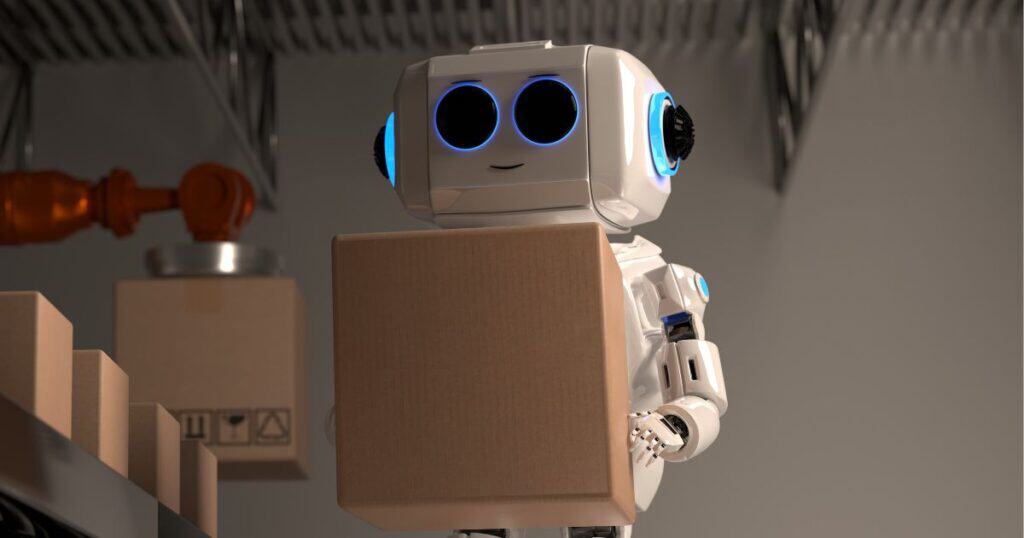
Modern technologies are actively used in healthcare facilities in order to provide high hygiene standards and operational efficiency. Janitor AI, an artificial intelligence system for healthcare sanitation, represents the next generation of cleaning technology.
Machine learning algorithms allow assessing the level of cleanliness; making predictions about when equipment needs to be maintained or replaced, learn from the accumulated data, etc.
The Janitorial AI system ensures compliance with hygiene standards, as well as increases patient safety and satisfaction. Janitor AI is used by leading healthcare organizations and cleaning service providers.
The Janitorial AI solution allows you to confidently trust your patient and operational data to us Janitor AI clean-rooms without storing personal patient information and works with your infrastructure.
Thus providing operational efficiency and safety without violating HIPAA
Tomorrow's artificial intelligence will come fast. Janitor AI and OpenAI are paving the way, but in different ways. OpenAI continues to raise the bar with very practical models like GPT-4, versatile, deep and powerful for a wide spectrum of deep learning and applications.
Janitor AI, on the other hand, is your one-stop shop specializing in powerful yet practical and less expensive AI. A special one. Custom made. Industry requirements. Companies leveraging Janitor AI are looking for automation tools that fit their core activities and save time and money without the need to invest in more generic and expensive AI platforms.
Over time, the combination of both AI forces could prove very powerful at the enterprise level. On the one hand, high-level innovation with Open AI and on the other, applied innovation with Janitor AI that adds value through its practical models. A mutual benefit that raises the threshold of convenience and security of AI implementation. This should make digital transformation easier and more sustainable for any business anywhere.
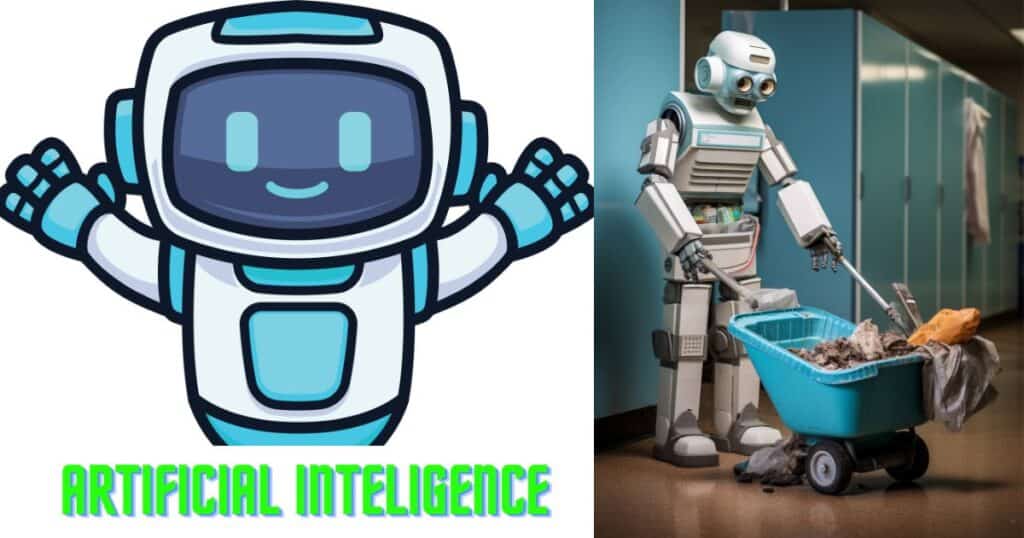
We discuss with you and go through final concusion at the topic "Janitor AI vs. Open AI" Today i discussed with you on the topic of (Janitor AI vs. Open AI) Janitor AI, a platform using Open AI LLM (Large Language Model) technology, automates janitorial tasks using its NLP (Natural Language Processing Expertise) on Reddit.
Despite potential bugs, the platform offers a free solution for exploring AI-generated content, despite occasional poetic or "horny" characters. See again. Open AI with its established presence offers a malleable experience with AI models like GPT-3.5. Its services are accessible through credits and a free $5 credit for new users, and it introduces "Janitor AI" for factual accuracy.
Remember. (Janitor AI vs. Open AI) offers a free option for AI enthusiasts seeking a nuanced experience, making it a solid choice for those seeking a more comprehensive Artificial Intelligence solution.
If you burning desire to have a detailed discussion on the legal issues of (Janitor AI vs. Open AI) then send us your comments in the comment box of this article and we will be happy to discuss with you, drop comment and update yourself today.
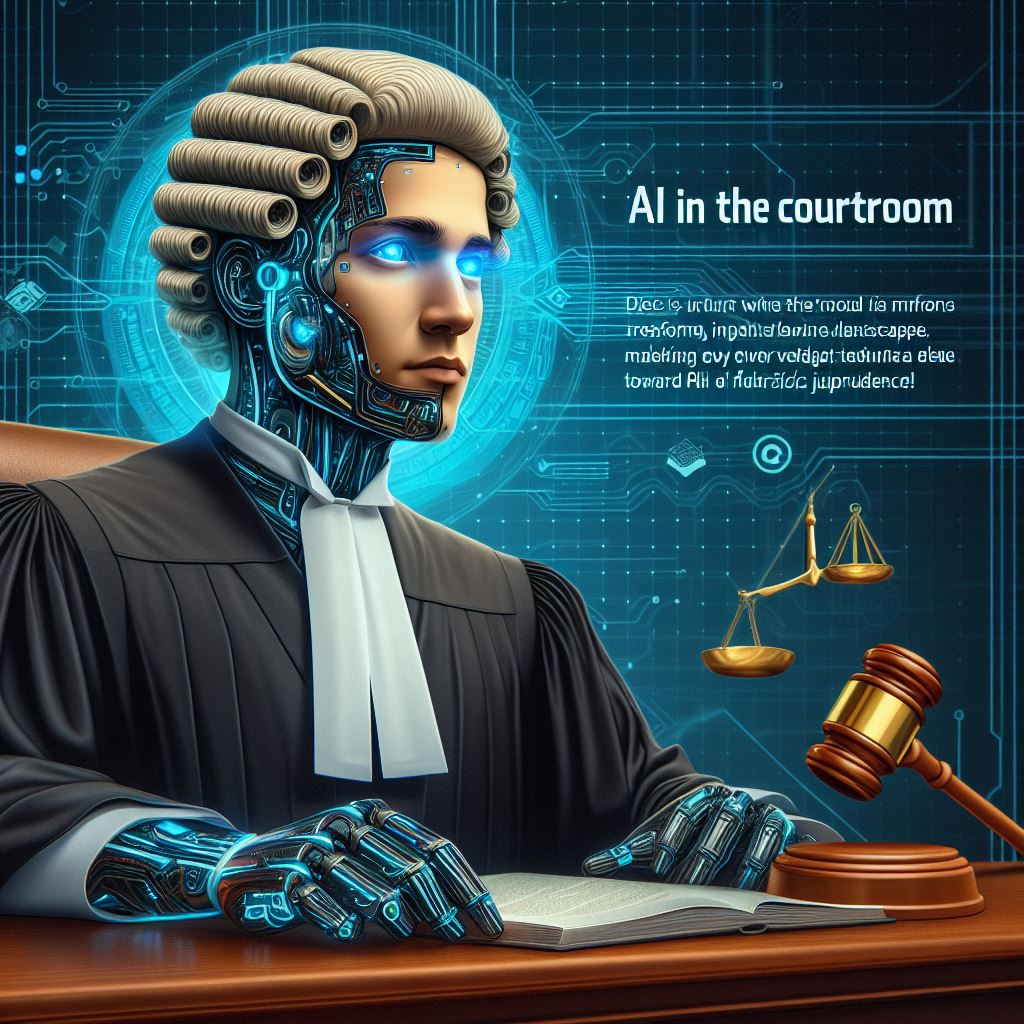
Welcome to the legal world. Today, this article explores the intersection of artificial intelligence (AI) and the legal landscape. Explore how AI impacts legal practice. From automating tasks to addressing complex legal questions, learn more about the innovation potential, and the challenges posed by generative artificial intelligence (AI). And the need for a legal framework to keep pace with technological advances. Dive into the evolving world of AI law and its implications for legal professionals and society.
For more in-depth insights, explore the article introducing AI law and its role in future legal practice.
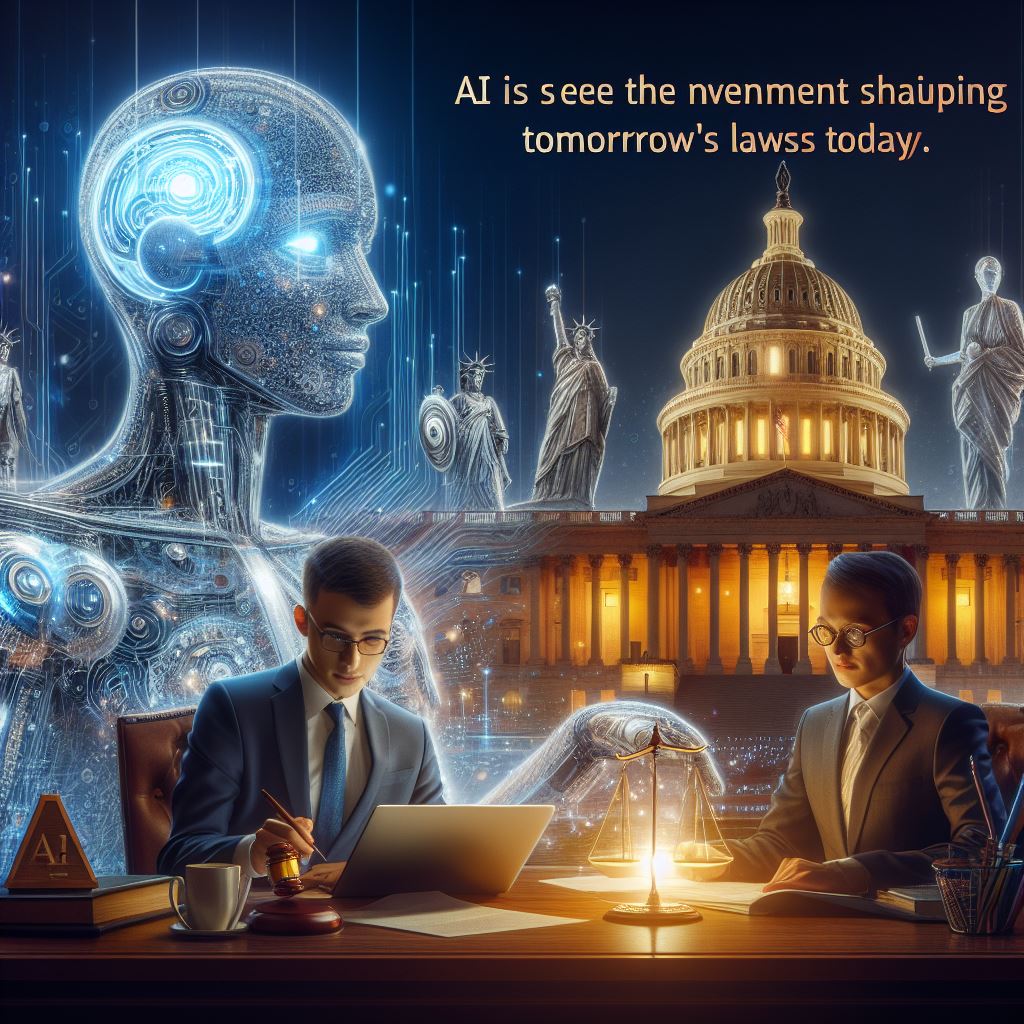
Today's topic is very interesting. Artificial intelligence (AI) has surprised the entire world with surprising results showing the benefits of its use and the pitfalls of its limitations.
As a result, governments in every country have had to formulate policies and laws regarding artificial intelligence (AI). In the world, countries like the United Kingdom (UK), United States of America (US), Canada, China, India, Australia, Germany, Japan, Brazil, Italy, the European Union (EU), and France have taken the initiative to formulate and implement laws and policies on artificial intelligence (AI) by creating policies and laws for the citizens and governments of their countries.
Admirable work has been done by prioritizing the purpose and need to protect rights and digital existence, which is truly commendable.
As generative AI models (like large language models) proliferate, they raise complex legal questions. For instance:
In this dynamic landscape, AI’s potential for innovation and upheaval demands thoughtful consideration from legal experts and policymakers alike
A Case Study Approach:
This study investigates the ethical use of Big Data and Artificial Intelligence (AI) technologies (BD+AI) using an empirical approach
It presents a multi-case study of ‘on-the-ground’ ethical issues across various domains.
By analysing findings from ten targeted case studies, it identifies common ethical concerns and compares them with existing literature classifications.
AI is transforming legal practice by providing data-driven insights.
Explore how AI can help legal professionals make informed decisions regarding case outcomes.
Understand the intricacies, benefits, challenges, and prospects of AI-driven legal analysis
These case studies demonstrate the transformative power of AI in the legal field.
Learn how AI can enhance efficiency, provide smarter insights, and optimize legal processes.
This special issue delves into the ethical, legal, and socio-political aspects of AI and law
The article covers perspectives from philosophy, theology, law, medicine, and computer science.
Gain insights into current debates and implications related to AI in the legal domain
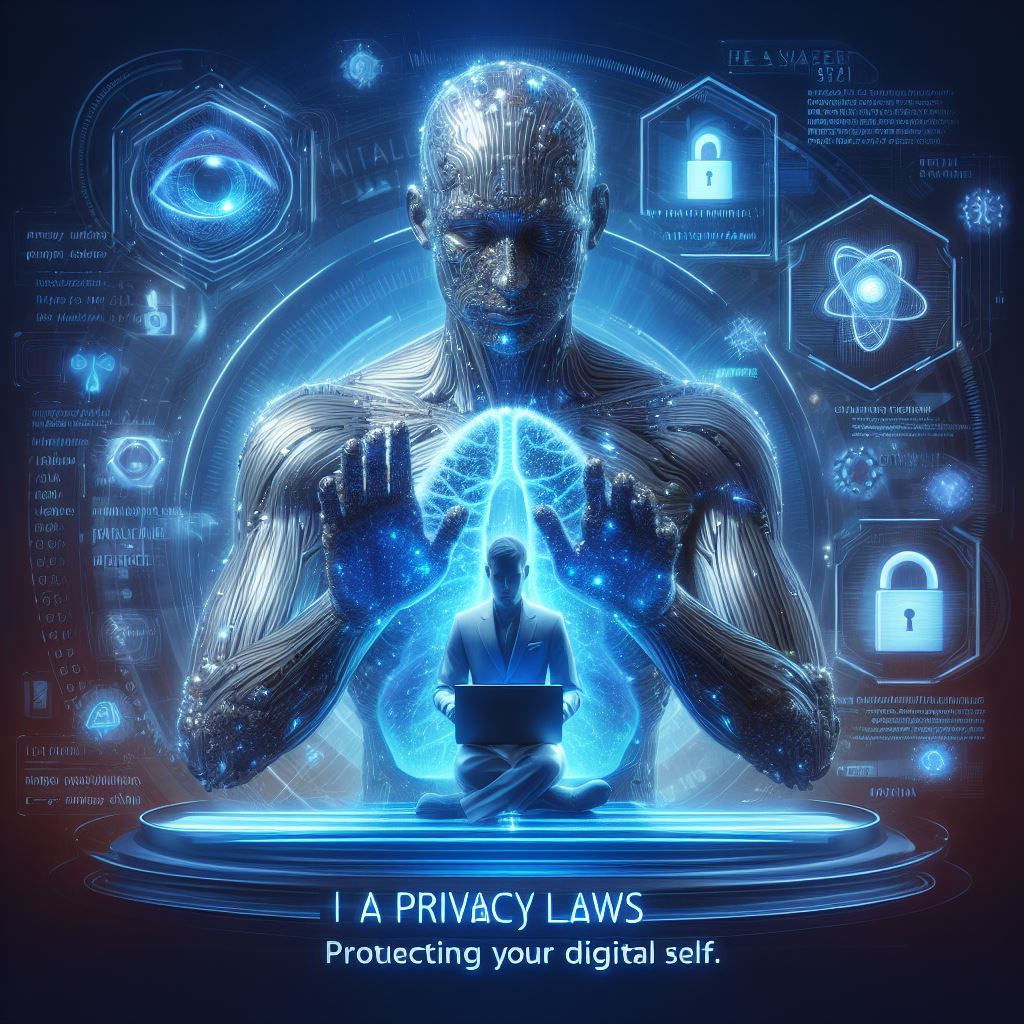
Generative AI (artificial intelligence), which includes large language models like ChatGPT is advancing rapidly. However, this progress brings forth complex legal issues.
Mark Lemley, a legal scholar, raises concerns about AI causing harm. For instance, if an artificial intelligence AI model provides advice on terrorism, recipes for dangerous substances, or disinformation that harms reputations or incites violence, who should be held accountable?
The company running the (artificial intelligence (AI) may not deliberately cause harm, but they might not predict the AI’s responses.
As artificial intelligence (AI) outpaces legal and regulatory frameworks, judges and lawmakers face novel questions:
How should the law address harmful speech generated by Artificial intelligence (AI)? Which lacks First Amendment rights?
AI’s impact extends beyond liability. It also transforms legal practice.
Researchers in the fields of AI & law develop computational models for legal reasoning and argumentation. These models enable new tools for legal professionals.
As AI continuously evolves, legal practitioners must grapple with its potential benefits and risks.
In summary, the marriage of AI and law presents exciting opportunities and daunting challenges. Legal systems must adapt swiftly to navigate this brave new world.
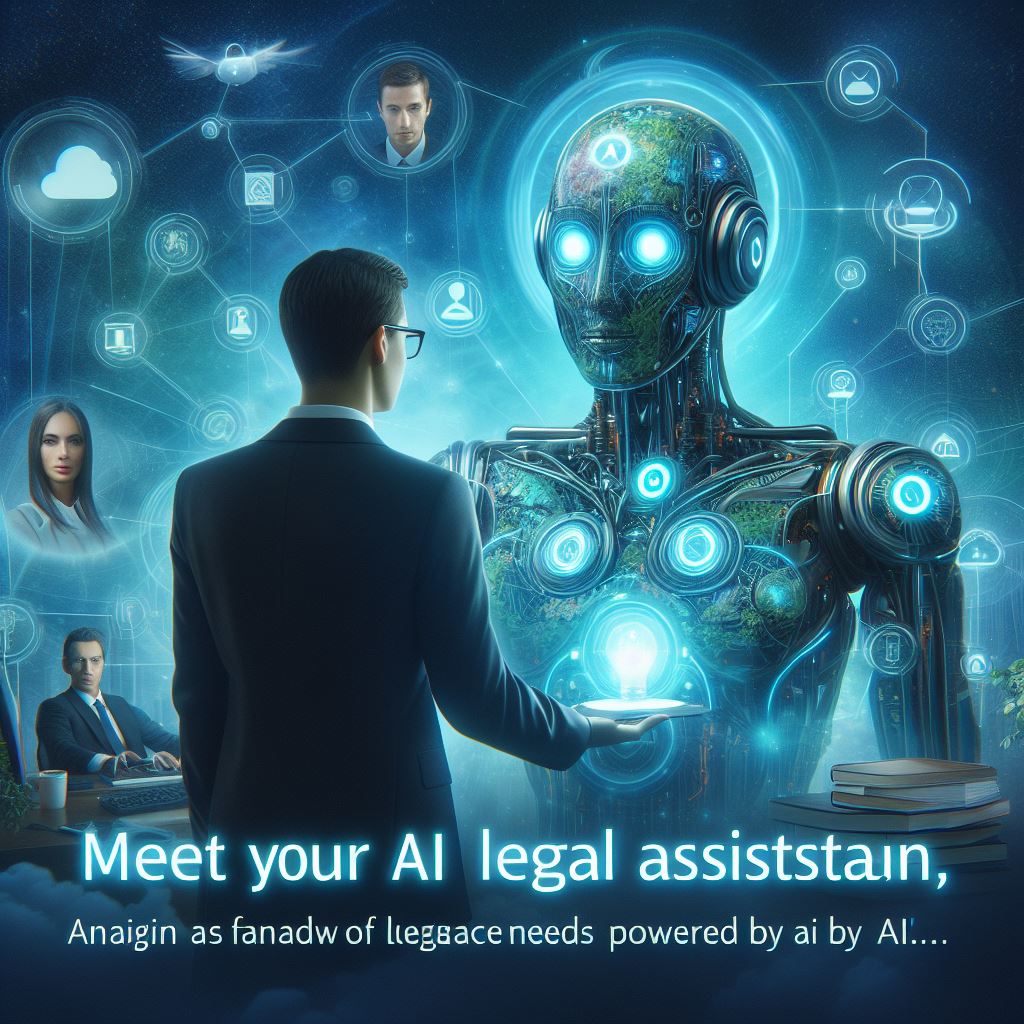
AI law is a critical field at the intersection of artificial intelligence (AI) and the legal domain. Let’s explore why it matters:
Judges and lawmakers face unprecedented issues:
Let’s explore some key areas within AI law:
Legal frameworks must adapt to address this novel challenge.
Greater exposure to AI is associated with higher employment in occupations when computer use is high. Workers with strong digital skills can adapt to and effectively use AI reaping its benefits.
Higher exposure to AI may lead to lower growth in average hours worked in occupations where computer use is low.
The adoption of AI could increase disparities between workers who can effectively use AI and those who cannot. Ensuring workers have the right skills for new technology is a key policy challenge.
When it comes to criminal liability, we must consider whether an AI system can satisfy the essential requirements:
This refers to the physical act or conduct that constitutes a crime. Can an AI system perform such acts?
The mental state or intent behind the act. Does an AI system possess intent?
Does the AI system have the cognitive abilities necessary for responsibility?
There are instances where an Artificial Intelligence system may engage in criminal actions without any human having planned or directed them. And, this raises questions about how the legal system should address this gap in criminal liability.
The future of AI Law is a captivating journey that intertwines technological advancements with legal frameworks. Let’s peer into what lies ahead:
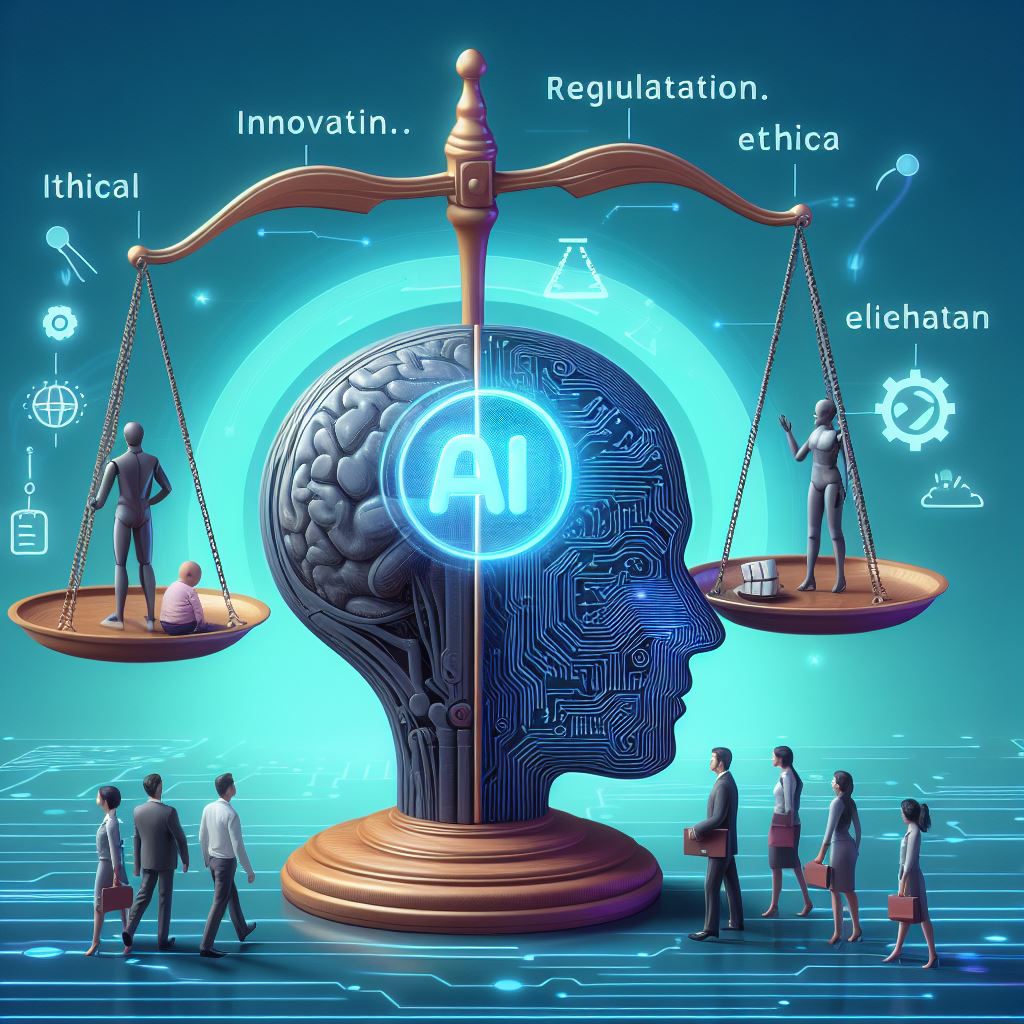
In the ever-evolving landscape of law and technology, the intersection of Artificial Intelligence (AI) and legal practice holds immense significance. As we conclude our exploration of AI law, several key takeaways emerge:
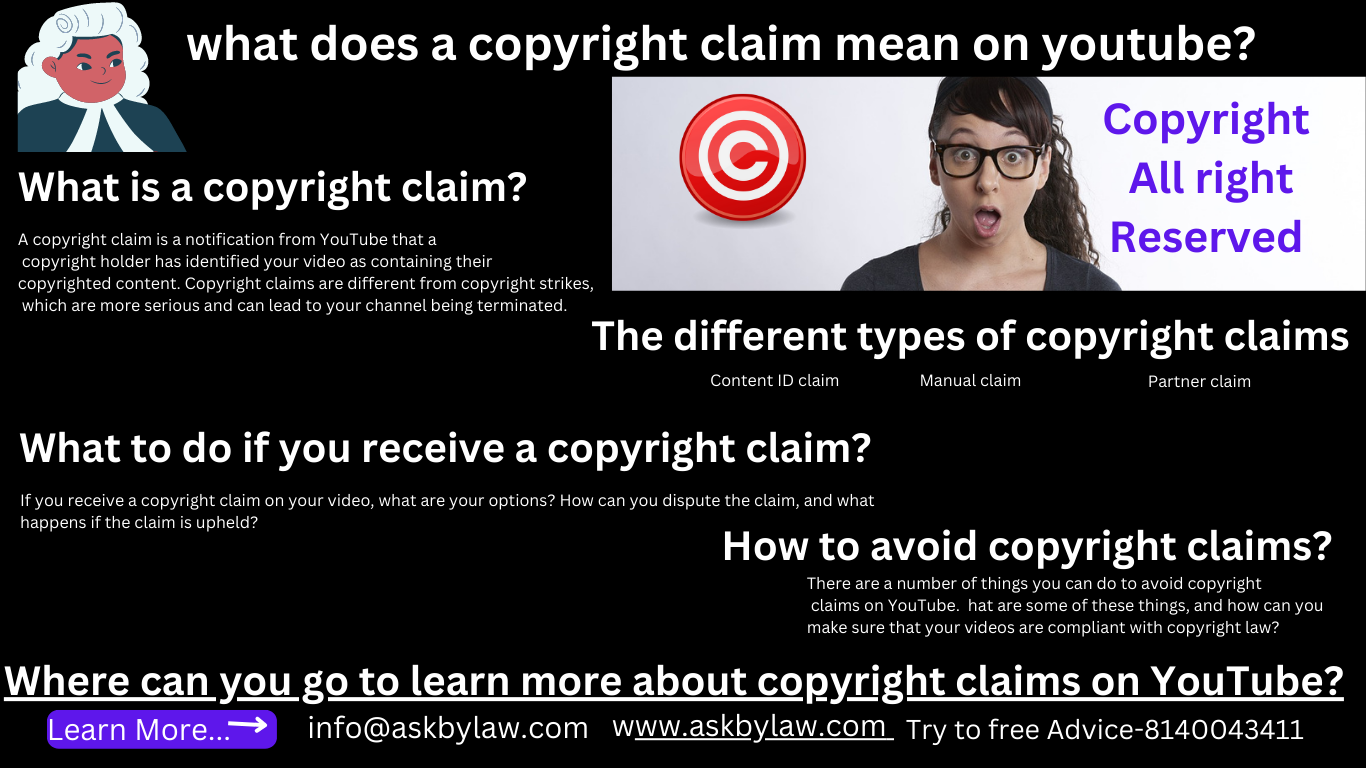
Basic summary of a copyright claim on youtube Have you uploaded some videoes to YouTube every day, only to find out that you have been sued by the copyright holder? If, the said has happened to you, know that you are not alone. And claiming copyright claims are a common occurrence on YouTube, and they…
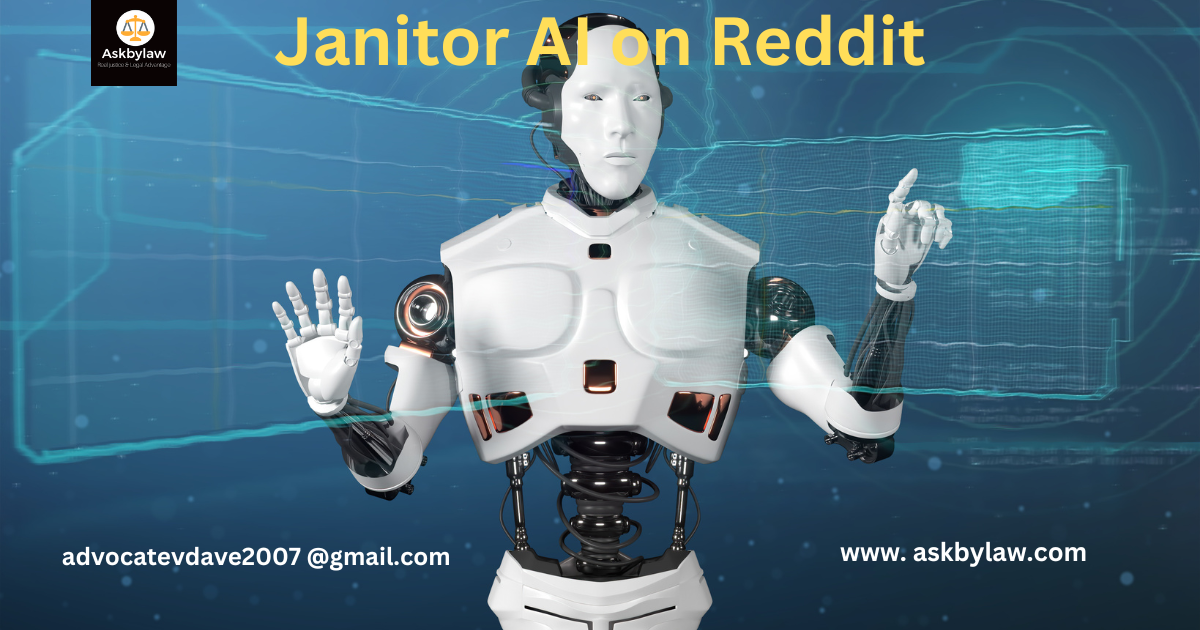
Discover the power of Janitor AI on Reddit Management 1. Introduction: Janitor AI on Reddit Today on this forum in the AI age we try to understand legal implications and other aspects with you on the topic "Janitor AI on Reddit". Although Janitor AI has started to be used on the Reddit platform so let's…
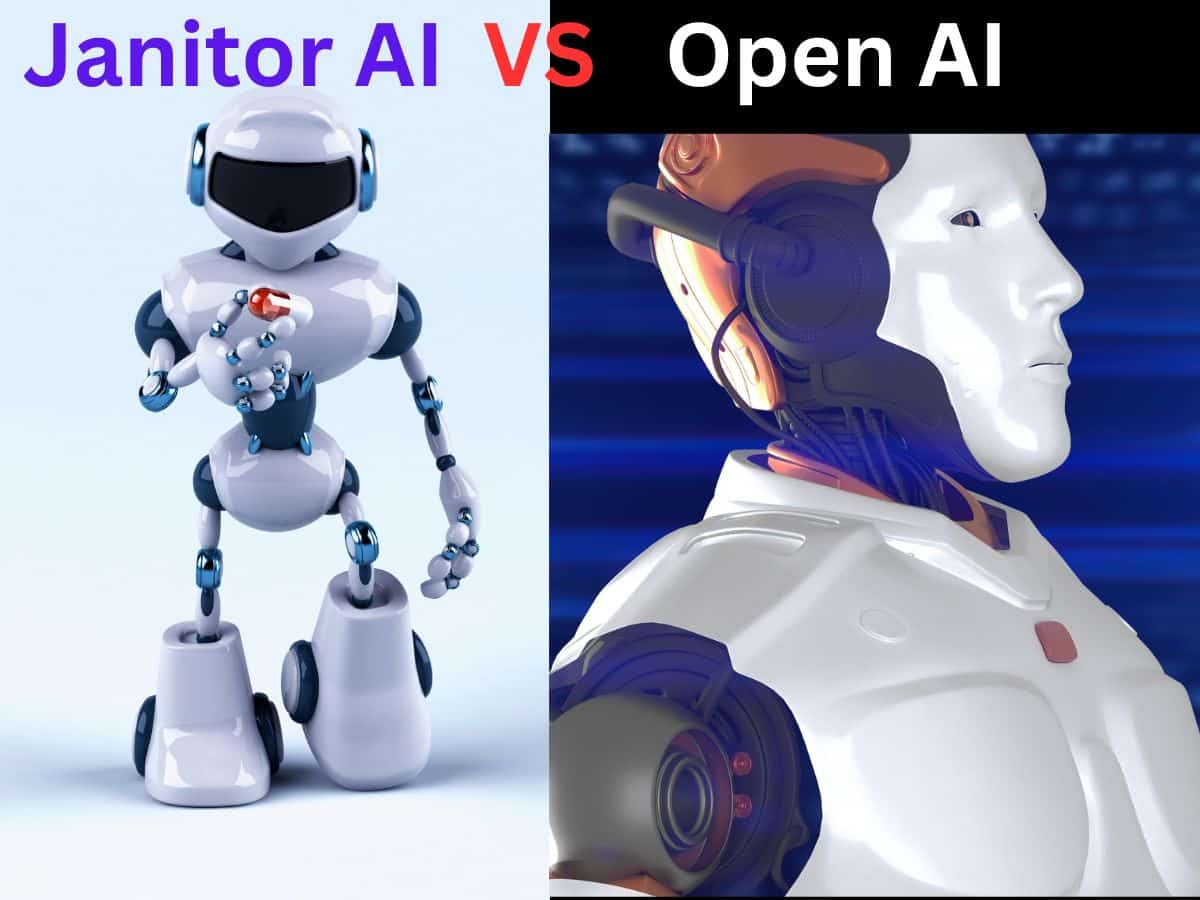
Legal insight: Janitor AI vs. Open AI 1. Introduction: Janitor AI vs. Open AI today I when thinking of the word AI, the concept of open AI versus revolutionary generative AI comes to mind. ChatGPT is also a much talked about concept in the world of AI. Janitor AI and Open AI are popular inventions…

AI trade secrets are a hotly debated topic and can also be called a solution to an emerging need. By checking the SWOT analysis and cost-benefit ratio of AI, it can be known that, shortly, we will understand the performance, future, uses, and limitations of this artificial intelligence (AI) and its commercial use in business.…
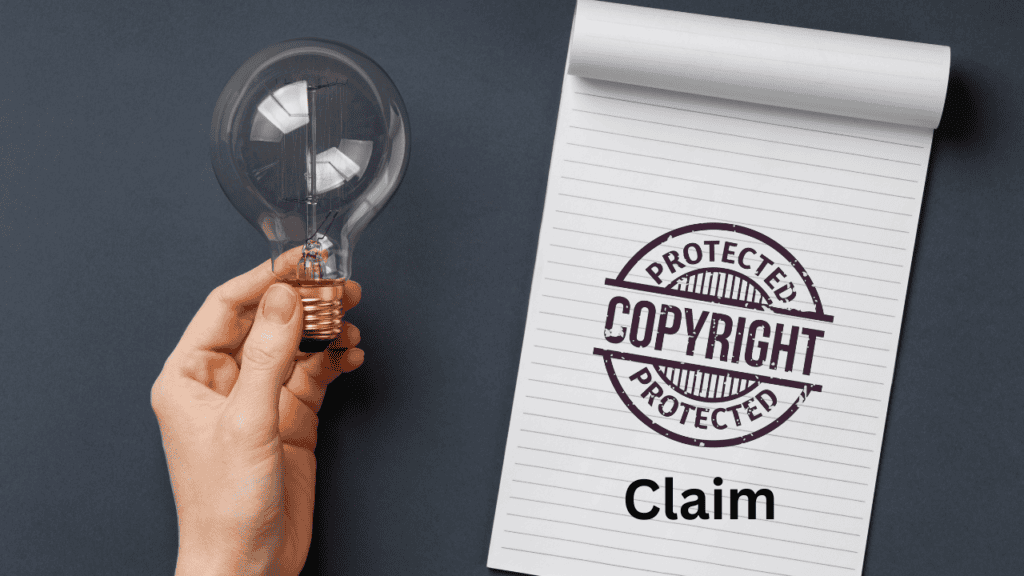
Creating digital property and creating income enjoyment is an imperative thought and careful endeavor, including false copyright claims on YouTube. When an original creator is accused of a false copyright claim, the genuine content creator can protect their original content creation if they seek to obtain, a strong cover of the law to protect their original creation. Often, due to misconceptions about the law and the negative experiences of well-wishers, the original creator neglects the protection of the law. As a result, he cannot properly defend his original content creation due to imaginary bias. This has led to a huge surge in fraudulently false copyright medicines, which raises many questions, and tensions about creation and reward.
Our article will help you find the motive behind a false copyright claim and inspire you to protect your original content creation in the world of intellectual property and be stress-free by making the creator aware and getting legal protection. To read

When a person self-identifies content or intellectual property created by fraudulent means, another person claims to have created the content. A false copyright claim makes such a claim and opposes and claims to deprive the creator of the original content or intellectual property from its use. Such claims are mostly found in video content. To read
Your initial reaction might be to assume that all claims are false, but that's not the case. Some claims are legitimate and made for various reasons.
There are cases where copyright claims are genuinely false. Here are three common scenarios:
Getting false copyright claim on YouTube videos can indeed be frustrating, especially when they are false. However, it’s essential to recognize that not every claim is illegitimate. Let’s explore how you can identify false claims and strategies for dealing with them:
If you use a song by your favorite artist in your video, and YouTube detects it. You’ll receive a copyright claim. This isn’t necessarily false; it means YouTube’s Content ID system detected copyrighted music, and ads may appear in your video in exchange for using the music.
Even if you purchased a license from a royalty-free music library, you might still receive a claim, in most cases. This is a valid claim, as stock music composers protect their work from unlicensed use.
There are cases when claims are genuinely false. Here are some typical scenarios:
YouTube’s Content ID system relies on a vast database of reference music tracks submitted by copyright owners. Unfortunately, some references aren’t legitimate. These include:
Some individuals maliciously attempt to remove content from YouTube by falsely asserting copyright ownership. YouTube reviews such requests to ensure they’re not abusive.
YouTube reported nearly 2.2 million false copyright claims in six months, with many videos later reinstated after determining the claims were incorrect.
If your video receives a Content ID claim, dispute it if you have valid reasons (e.g., you have all necessary rights to the content).
Use relevant evidence, such as license certificates, to support your case.
Persistence is necessary to resolve false claims. Keep communicating with YouTube and provide clear explanations.
Disputing a false copyright claim on YouTube involves several steps. Here’s a guide to help you navigate the process:
Location of the video that received the copyright claim. Visit your YouTube studio and find the video in question.
Click on the video to view the claim details. Understand which part of your video triggered the claim (e.g., specific music, visuals, or other content).
If your video falls under fair use, you can dispute the claim. Fair use includes commentary, criticism, education, and transformative content.
If you have the necessary licenses or permissions for the content, dispute the claim.
If the content is in the public domain it cannot be claimed.
Sometimes, claims are made in error due to similarities. Explain why your content is distinct.
If you used Creative Commons-licensed material correctly, dispute the claim.
Parodies and satirical content are protected under fair use.
If you believe the claimant is mistaken, you can file a counter-notification.
If your video doesn’t infringe any copyright, dispute the claim.
If you purchased music or visuals legally
Explain how your video qualifies as fair use.
if applicable
Show where your content differs from the claimed material.
Removing a copyright claim on YouTube can be a bit tricky, but I’ll guide you through the process. Here are the steps you can take:
When you upload a video to YouTube, the platform now automatically checks for copyrighted material. Before hitting the publish button, YouTube will inspect your content and notify you if any copyrighted material is detected.
You’ll see this in the Checks section during the upload process. It’s a game-changer because it lets you know about copyright matches before your video goes live.
You can then decide on the best course of action, whether it’s disputing the claim or taking steps to remove it.
On the same upload page, expand the details of the copyright claim by clicking “See Details,”
If you decide to move forward and upload the video, you have options:
Definitely, yes, a copyright claim on your YouTube video can indeed affect your views and monetization. Here’s how:
YouTube is less likely to recommend videos with copyrighted material. If your video contains copyrighted content, it might receive fewer views due to this recommendation algorithm. Additionally, some viewers might avoid videos with copyright claims.
If your channel isn’t monetized yet, you need to reach 1,000 subscribers and accumulate 4,000 total watch hours to qualify. However, copyrighted videos don’t count toward these watch hours. So, if your videos are copyright-claimed, they won’t contribute to meeting the threshold for monetization.
The copyright owner may restrict your video from appearing in certain regions or even block it entirely.
YouTube’s algorithm considers copyright claims when recommending videos. If your video has a claim, it might not be suggested as frequently.
When it comes to adding music to your videos without running into copyright issues, there are several alternatives you can explore:
Lickd offers access to a vast catalog of mainstream music from well-known artists. You can license popular tracks for your videos, and they’ll take care of any copyright claims for you.
Snapmuse provides royalty-free music that you can use in your YouTube videos. It’s a great resource for finding music without worrying about copyright restrictions.
Look for music released under Creative Commons licenses. These licenses allow creators to use the music for free, as long as they follow specific terms (like giving credit to the artist).
Public domain music is not protected by copyright and is free to use. You can find classical compositions, traditional folk songs, and other works that have entered the public domain.
Create your own music! If you’re musically inclined, compose original tunes for your videos. This ensures complete ownership and avoids any copyright issues.
Creating your own original music can be a rewarding and fulfilling experience. Here are some tips to get you started:
Listen to a wide variety of music across different genres. Pay attention to melodies, harmonies, rhythms, and instrumentation. Inspiration can strike from unexpected places.
If you don’t already play an instrument, consider learning one. Whether it’s the guitar, piano, or even electronic music production software, having an instrument at your disposal opens up creative possibilities.
Start by playing simple chords and experimenting with different progressions. Try major, minor, and seventh chords. Combine them to create unique sequences.
Melodies are the heart of any song. Hum or play around with notes until you find a catchy tune. Use scales as a foundation and explore different intervals.
If you’re interested in writing lyrics, jot down your thoughts, emotions, and experiences. Lyrics can add depth and meaning to your music.
Invest in recording equipment or use digital audio workstations (DAWs) like Ableton Live, FL Studio, or Logic Pro. Learn how to record, edit, and mix your tracks.
Explore synthesizers and sound libraries. Create unique sounds by tweaking parameters like filters, oscillators, and effects.
Collaborating with other musicians can lead to fresh ideas. Work with vocalists, instrumentalists, or producers to enhance your music.
Share your work with friends, family, or online communities. Constructive feedback helps you improve. Don’t be afraid to iterate and refine your compositions.
Music creation is a journey. Be patient with yourself, and stay curious. Learn from both successes and failures.
Promoting your original music online is crucial for gaining visibility and growing your fan base. Here are eight effective steps to help you get started:
Establish a professional online presence by creating a dedicated music website. Use platforms like WordPress/ Wix to build a site where fans can learn more about you, listen to your music, and find links to your social media profiles.
Distribute your music on popular streaming platforms like Spotify, Apple Music, and Amazon Music. Samsung Music. These services allow you to reach a global audience and monetize your streams.
Leverage social media platforms such as Instagram, Facebook, Twitter, Tik-Tok, etc., . Share behind-the-scenes content, teasers, and engage with your audience. Consistency is key.
Compile a professional press kit that includes your bio, high-quality photos, music samples, and any notable achievements. This makes it easier for journalists, bloggers, and promoters to feature your music.
Reach out to music blogs and websites that align with your genre. Submit your music for reviews, interviews, or features. Positive coverage can introduce your music to new audiences.
Visual content is powerful. Create music videos for your songs and share them on YouTube and social media. Engage viewers with captivating visuals that complement your music.
Collaborate with fellow musicians, producers, or influencers. Joint projects can expand your reach and introduce your music to their followers.
Perform live whenever possible. Whether it’s virtual concerts or local gigs, live shows create a direct connection with fans. Promote your shows through social media, flyers, and local event listings.
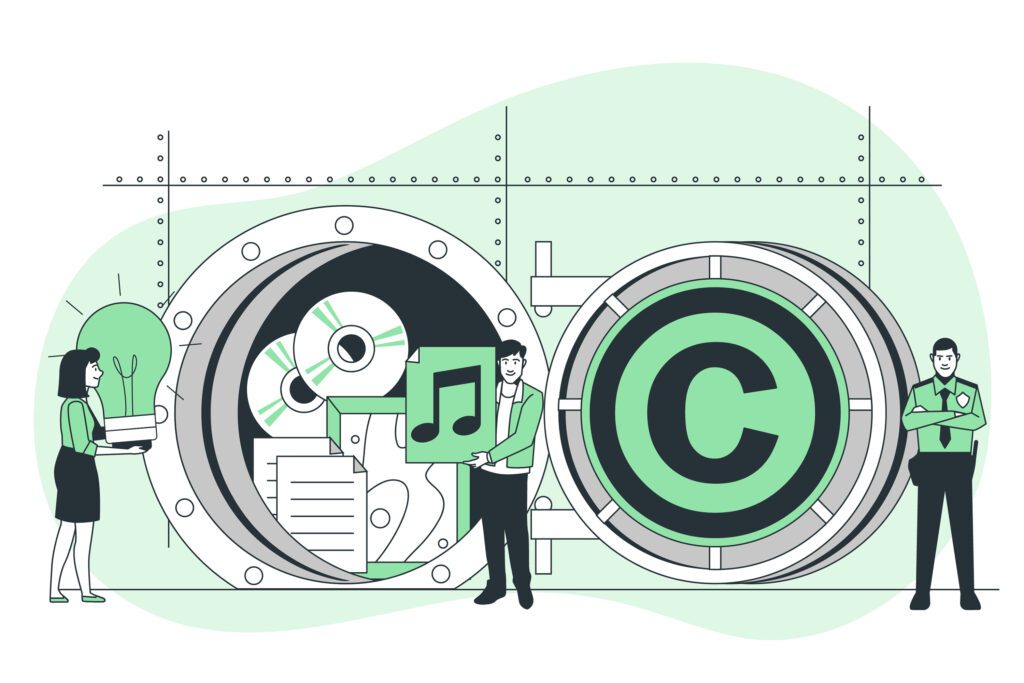
Judges evaluate fair use based on these factors:
The Purpose and Character of the Use: Is it for nonprofit educational purposes, commentary, criticism, research, or news reporting?
The Nature of the Copyrighted Work: Some works (e.g., factual or published) are more likely to be considered fair use.
The amount and substantiality of the portion used: Using a small portion is more likely to be fair use.
Effect on the market: If the use doesn’t harm the market for the original work, it’s more likely to be fair use.
Fair Use:
Definition: Fair use is a limitation and exception to the exclusive rights granted by copyright law to the author of a creative work.
Purpose and Character of Use:
Fair use involves unauthorized use that does not violate the copyright holder’s rights.
It is often transformative, adding new expression or meaning to the original material.
Commercial use can still qualify as fair use under certain circumstances.
Nature of the Copyrighted Work:
Fair use considers whether the use is outweighed by the public interest in its free dissemination.
It applies to various purposes like criticism, commentary, research, and news reporting.
Amount and Substantiality of Portion Used:
Fair use involves using a portion that is not substantial enough to appropriate the “heart” of the original work.
Effect on Market Value of Work:
Fair use does not harm the market or potential market for the original work.
Legal Basis: Section 107 of the U.S. Copyright Act outlines fair use criteria.
Copyright Infringement:
Definition: Infringement occurs when someone unauthorizedly uses a copyrighted work, violating the exclusive rights granted by copyright law.
Purpose and Character of Use:
Infringement does not further the purpose of copyright; it directly violates the holder’s rights.
Nature of the Copyrighted Work:
Infringement can appropriate the “heart” of the original work.
Amount and Substantiality of Portion Used:
Infringement involves using a portion substantial enough to harm the market for the original work.
Effect on Market Value of Work:
Infringement harms the market or potential market for the original work.
Legal Basis: Section 106 of the U.S. Copyright Act grants exclusive rights to creators.
Balancing Act:
Courts analyze fair use on a case-by-case basis, considering the four factors explicitly listed in section 107:
Purpose and character of the use
Nature of the copyrighted work
Amount and substantiality of the portion used
Effect on the market value of the work
Community Guidelines Strikes:
YouTube issues strike when your content violates the Community Guidelines.
Here’s how the system works:
First Strike: You receive a warning, but no immediate penalty.
Second Strike: Within a 90-day period, you face a two-week upload freeze (you can’t upload new content).
Third Strike: Another strike within the same 90-day period results in channel termination.
Copyright Strikes:
Copyright strikes occur when someone claims your content infringes their copyright.
If you receive multiple copyright strikes, your channel may be terminated.
You can file a counter notification if you believe the claims are incorrect.
Transparency and Appeals:
YouTube aims to be transparent about strikes, explaining why they occurred.
If you think a strike was a mistake, you can appeal it using the provided form.
Remember not to submit multiple appeal requests, as it can cause delays.
Today's article discusses the topic of false copyright claims on YouTube. I hope you find it useful.
Countering fraudulent copyright claims may seem difficult at first sight, but being well-informed and proactively confronting original content creators can save original content creators from undue interference with economic and social loss.
For original content creators considering false copyright claims as a potential strategy, it is important to understand that the legal and ethical consequences often outweigh any temporary and unfair benefits.
In today's environment where creativity is the pulse of digital content, adherence to proper copyright practices is an increasingly critical and imperative requirement. It is our culture to allow original art to flourish and protect it from obstruction. And every original content creator deserves their fair share of rewards.
Holders of false copyright claims do more than simply steal content. They create the illusion of being the original creator by stopping the flow of creativity, which violates the ethical lines of digital citizenship, which is why protecting original creativity is a constitutional right. A right of creation every original artist should get.
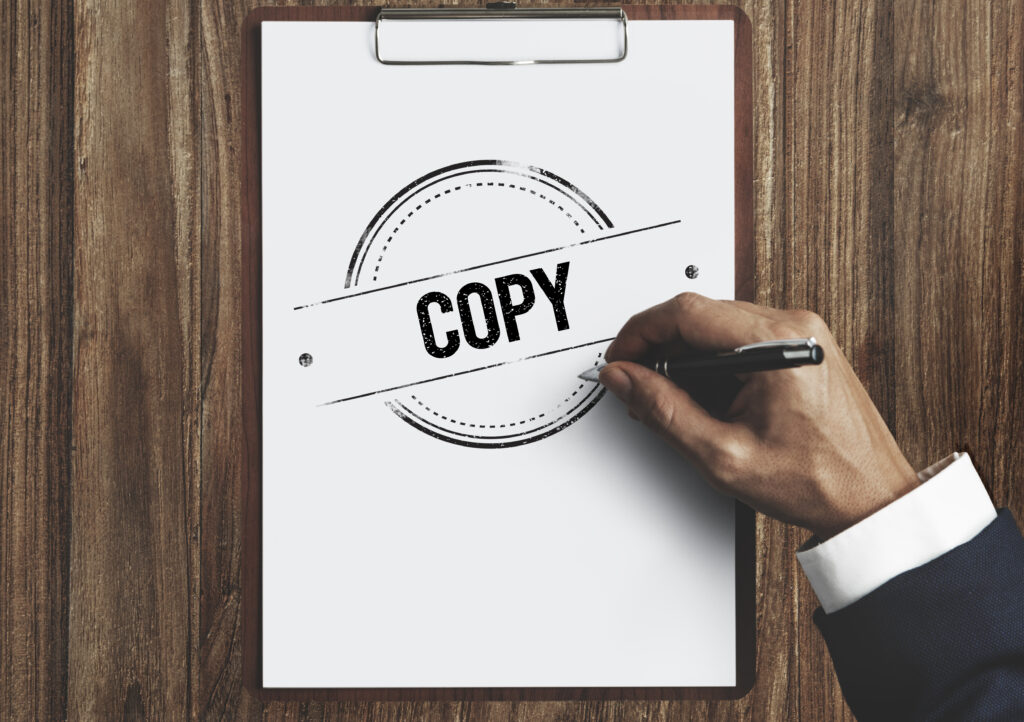
What are DMCA takedowns? In the vast expanse of digital content where pixels meet passion lies a battleground: the DMCA takedown process on YouTube. Picture this: your latest video, painstakingly crafted, dances across screens and gathers views like fireflies on a summer night. But what if someone else pirouettes with your creation? Fear not, for the Digital Millennium Copyright Act (DMCA) steps onto the stage. It’s both a sword and a shield a mechanism to protect your intellectual property and a compass for creators.
What are DMCA takedowns? Nota bane: that DMCA notice on YouTube counts as one strike against your entire account. If you receive three strikes within a 90-day continuing period, your videos and channel may be permanently removed. Make sure to follow the process diligently to protect your copyrighted content.
When infringing content pirouettes on your turf, the DMCA waltzes in. Here’s the choreography: notice-and-takedown. The copyright owner, like a vigilant conductor, raises their baton. YouTube's Grand Theater awaits a valid DMCA notice is elegantly composed, and triggers action. The curtain falls, and the content vanishes.
Creators, listen to you first closely! As legal guardians of your artistry, we wield our quills and gavels. If you find your work pirated, fear not. Knowledge is your armor. Whether you’re a seasoned YouTuber or a fledgling filmmaker, we’re here.
Should the DMCA tempest brew our legal ship sails? Consult us. We’ll decipher the Act’s cryptic verses, draft your notices, and steer you through the storm. Protect your pixels. Preserve your passion.
Are you ready to reclaim your creative seas? Consult with us now, and let’s hoist the anchor!
If your copyright-protected work was posted on YouTube without your authorization, you can submit a copyright removal request to request that the content be removed. Here’s how you can go about it:
To view the copyright removal requests you’ve previously submitted to YouTube:
The Digital Millennium Copyright Act (DMCA) is a United States copyright law that addresses issues related to digital content, intellectual property, and online infringement. Here are some key points about the DMCA:
The DMCA offers a safe harbor provision for online service providers (such as websites, social media platforms, and hosting services). These providers are shielded from liability for copyright infringement committed by their users, as long as they promptly respond to takedown requests.
Copyright owners can submit a DMCA takedown notice to request the removal of infringing content from online platforms. The platform must then take down the content promptly.
If a user believes their content was wrongfully taken down, they can submit a counter-notification to challenge the takedown. The platform may restore the content if the user complies with certain requirements.
The DMCA prohibits the circumvention of digital rights management (DRM) technologies used to protect copyrighted works.
A takedown notice is a formal request made by a copyright holder, or their authorized representative to remove infringing content from an online platform. Here are the key points about takedown notices:
Ignoring a takedown notice can have legal and practical consequences. Here are some potential outcomes:
If you ignore a valid takedown notice, the copyright owner may choose to file a lawsuit against you for copyright infringement.
If the court rules in favor of the copyright owner, you could be liable for damages, Which may include monetary compensation.
Continued infringement may result in the permanent removal of your content or even your entire account from the platform.
If you’ve received a DMCA takedown notice on YouTube and believe the claim is incorrect, you can file a DMCA counter-notice to dispute it. Here’s how you can go about it:
Of course Yes. The duration for resolving a DMCA takedown notice can vary based on several factors. Here are some key points to consider:
If the copyright owner responds to your DMCA counter-notice, there are a few possible outcomes:
The Fair use of YouTube is a legal doctrine that allows the use of copyright-protected material under specific circumstances without requiring permission from the copyright holder. Here are the key points about fair use:
Judges evaluate fair use based on these factors:
1.The nature of the copyrighted work: Some works (e.g., factual or published) are more likely to be considered fair use.
2. The nature of the copyrighted work: Some works (e.g., factual or published) are more likely to be considered fair use.
3. Amount and substantiality of the portion used: Using a small portion is more likely to be fair use.
4. Effect on the market: If the use doesn’t harm the market for the original work, it’s more likely to be fair use.
Fair use rules differ across countries and regions:
United States: Works of commentary, criticism, research, teaching, or news reporting may qualify as fair use.
European Union (EU): More limited exceptions exist, such as quotation, criticism, review, caricature, parody, and pastiche.
Other countries may have a concept called “fair dealing” with different criteria
Before uploading videos that use copyright-protected material, it’s advisable to seek legal advice from an expert.

Qoestion. What are DMCA takedowns? Answer. Looking at the intricate dance of digital rights and creative expression, the DMCA takedown process on YouTube emerges as a pivotal player. As content creators; we wield our cameras and keyboards to craft narratives that ripple across screens worldwide. Yet, within this virtual tapestry, copyright battles rage in a symphony of cease-and-desist letters, strikes, and appeals.
The DMCA, with its notice-and-takedown choreography, seeks to harmonize these discordant notes. But it’s not just legalese; it’s a call to action. Creators, with the help of AskByLaw, safeguard your creation and video. Educate your audience. Respect the rights of fellow artists. Let us navigate this labyrinth together, guided by the compass of fairness and the shield of DMCA knowledge, as per our article.
If you find yourself entangled in the DMCA web? Our legal team stands ready. Reach out for a consultation, and let us weave a strategy that protects your creativity and rights. Login Here
#DMCA Takedown Notice
#Copyright Infringement
#Copyright Infringement
#Digital Millennium Copyright Act (DMCA)
#DMCA Compliance:
#Infringing Content
Basic summary of a copyright claim on youtube Have you uploaded some videoes to YouTube every day, only to find out that you have been sued by the copyright holder? If, the said has happened to you, know that you are not alone. And claiming copyright claims are a common occurrence on YouTube, and they…
Discover the power of Janitor AI on Reddit Management 1. Introduction: Janitor AI on Reddit Today on this forum in the AI age we try to understand legal implications and other aspects with you on the topic "Janitor AI on Reddit". Although Janitor AI has started to be used on the Reddit platform so let's…
Legal insight: Janitor AI vs. Open AI 1. Introduction: Janitor AI vs. Open AI today I when thinking of the word AI, the concept of open AI versus revolutionary generative AI comes to mind. ChatGPT is also a much talked about concept in the world of AI. Janitor AI and Open AI are popular inventions…
AI trade secrets are a hotly debated topic and can also be called a solution to an emerging need. By checking the SWOT analysis and cost-benefit ratio of AI, it can be known that, shortly, we will understand the performance, future, uses, and limitations of this artificial intelligence (AI) and its commercial use in business.…
DMCA Takedowns on YouTube. YouTube is a major platform for uploading and sharing video content. YouTube gives its users the freedom to upload, like, and share videos.
YouTube has become a very popular website (platform) in the world. All kinds of people like comedians, teachers, vloggers, lawyers, Engineers, food recipe makers musicians, Companies etc. Create and upload their video content on YouTube.
It has become a common and easy thing to share copyrighted uploaded content on YouTube by a creative YouTuber. Due to this, the amount of copyright infringement has started to increase very alarmingly; this matter is capable of harming creative YouTubers.
DMCA Takedown gives such creative YouTubers the right to request their unauthorized content to be removed, allowing YouTube to remove copyright-infringing content from its platform and providing protection to creative YouTubers.
Have you felt the feeling that some user without your prior approval or permission has made the video you made and uploaded it on YouTube to get views and likes? If this has happened to you, this article is for you. In this article, I am going to show you a legal process through which you can easily remove copyright-infringing content from YouTube.
Have you heard the term DMCA Takedowns on YouTube? Yes, this term gives you ample protection against non-creative and unauthorized use of your original video content by others. What is a DMCA Takedowns on YouTube, Who Can File a DMCA Takedowns on YouTube? I'm here to discuss in detail what you should do if you receive a DMCA Takedowns on YouTube to protect your copyright on YouTube.
You put a lot of effort into creating your creative video and you find out that your hard-earned video content has been stolen and the person who stole your content has profited from it. You are tired of thinking about how to recover your original content, and videos from the person who stole your content.
And you are not sure how to proceed against them so if you are feeling more insecure than trust that I will give you sound legal advice and help you to protect your intellectual property. Read more about solving your problem.
" Any lawyer without law books would be like a labor without tools"
Tomas Jefferson
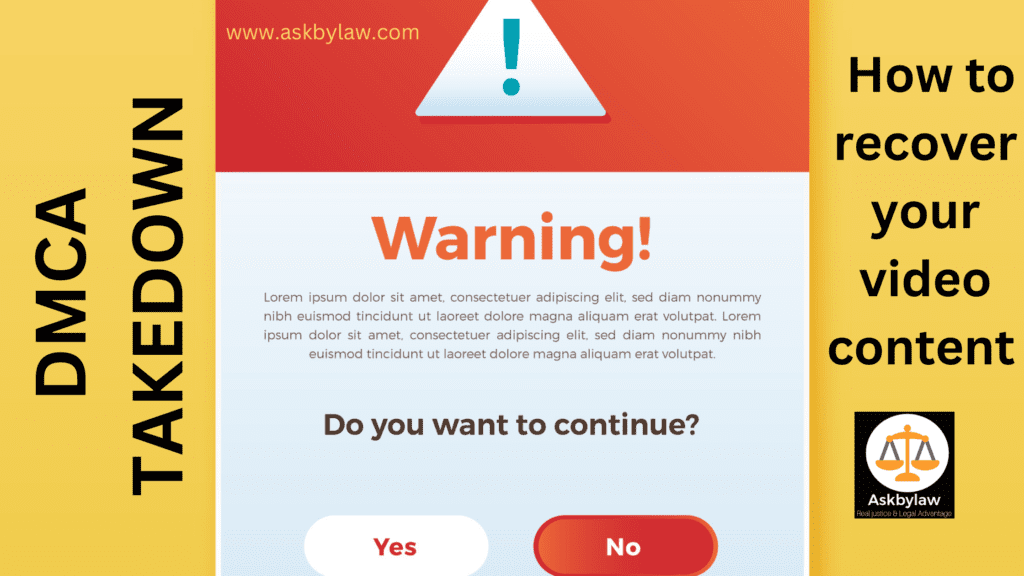
As an expert legal advisor with detailed knowledge of copyright and the ability to develop a fully legal-based YouTube content plan. I will definitely provide you with a structured outline to develop well described videos on "DMCA Takedown on YouTube" with legal protection.
This article will contain a legal framework of reliable information from high-level legal experience/expertise aimed at effectively educating readers and users.
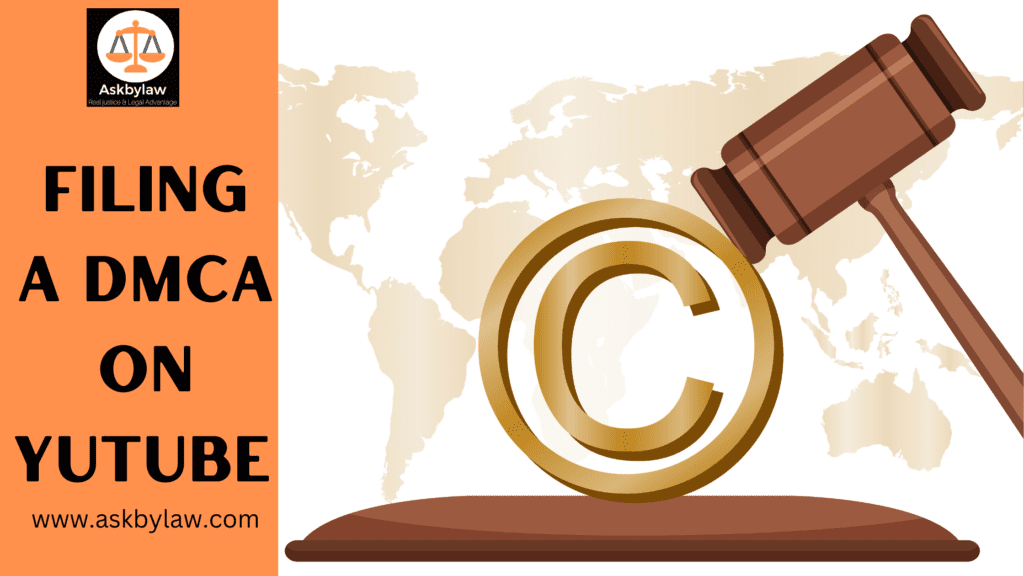
The Digital Millennium Copyright Act is a law of the United States of America. This Act is designed to implement the World Intellectual Property Organization's Copyright Treaty and Phonogram Treaties, which protect the production and dissemination of technology devices or services thereof.
This law is primarily designed to curb copyright infringement. This law is intended to protect the original copyright holder against injustice caused by unauthorized access to copyrighted works protected by law. An important issue in today's digital age is that the task of managing and protecting copyrighted content created by YouTubers themselves has become tedious and stressful.
The Digital Millennium Copyright Act addresses copyright concerns for creative YouTubers. The main purpose of the Digital Millennium Copyright Act is to prevent the unauthorized sharing and dissemination of creative YouTubers' creative content and rights on reputable platforms.
In 1998, the US Congress passed the Digital Millennium Copyright Act with the main and primary objectives of (1) establishing protections for online business or service providers in certain circumstances (2) providing incentives and protection to copyright owners against unauthorized access to their digital works in digital formats; (3) making it illegal to provide false copyright management information and/or to remove and/or alter such information under certain circumstances;
Section 512 of the DMCA, which deals with copyright, includes provisions regarding notices and counter-notices of copyright infringement.
When an owner voluntarily creates and displays digital works, without the permission of the original creative owner who created the work, a DMCA takedown is processed under the Digital Millennium Copyright Act for infringing the act of unauthorized access to the copyright and digital works created by the original owner.
Protection, which requires the creator of the original work that has been infringed upon, has to be invoked. A DMCA takedown is a legal means of early resolution of copyright infringement problems of online businesses or service providers.
The DMCA is a copyright infringement law of the United States of America. This law provides a remedy to the creator of copyrighted material to immediately remove copyright-infringing material from websites or other platforms without going to court.

The provisions of the DMCA provide necessary and essential protections to the original creator of copyright. This can be understood as follows.
Provide legal protection and security to owners or individuals to any person or company trade products or services through various online platforms such as a website or social media.
This provision is known as a self-harbor in the DMCA Act. This self-harbor provision protects against direct liability arising from copyright infringement and also encourages the development of user-generated digital content.
This system consists of an address system for immediate removal of all copyright-infringing content upon receipt of a DMCA notice based on the demand of a copyright holder providing an online business or service.
Protection against Fraud: This mechanism includes an effective management mechanism i.e. DRM (Digital Rights Management) to protect copyrighted content through the DMCA to prevent copyright infringement and prevent illegal use. And the main task is to prevent manufacturers from tampering with their content and preventing piracy.
The main purpose of the DMCA is to protect content creators' rights and freedom of expression. The provisions of the DMCA give importance to the intellectual property rights of creators and ensure that creators of content can do so online without any threat.
DMCA has created strict policies from YouTube in line with takedowns and has also implemented a system of Content IDs to address copyright issues. YouTube's policies prohibit the uploading of their copyrighted content by others without the permission of the original copyright owner. YouTube may track or block the copyright holder's content from being played further.
By developing the Content ID system, YouTube allows music labels and movie studio owners to upload content copyrighted by the original owners to its database, and then the Content ID system scans it. And YouTube often overlaps with other content. YouTube allows its original owner to advertise and monetize content.
Sometimes when a copyright holder notifies YouTube about copyrighted content uploaded by another user stating that the uploaded content falls under the definition of fair use.
YouTube will conduct a legal review of the notice they received, and this review proves that the uploaded copyrighted content does not fall under fair use. Any notice sent by the copyright holder will be treated as a false notice by YouTube and further processed. YouTube may also penalize the copyright holder for giving false notices.
Due to the penalty imposed by YouTube, the copyright holder who sent the false DMCA notice may be forced to appear in the court office, and reduceor lost the reputation of the person who gave the false notice may be seriously damaged and there may be circumstances of suffering financial loss. Statistical data for DMCA takedowns on YouTube
When YouTube receives a written notice regarding a DMCA from a copyright holder or their authorized legal representative, is YouTube sending that notice in compliance with the law? Reviews it. If the notice is found to be in compliance with DMCA rules, YouTube will immediately remove the infringing content in accordance with the provisions of the Digital Millennium Copyright Act and notify the user who uploaded the copyrighted content accordingly.
YouTube gives the option to provide a counter-notice to the user uploading the copyrighted content if the user of the revoked content is making fair use of the copyrighted content. If a user who makes fair use of copyrighted content gives a counter-notice to YouTube, the original copyright holder is notified by YouTube. If a user who makes fair use of copyrighted content does not provide a counter-notice to YouTube, YouTube will assume that the uploaded content is found to be infringing under the DMCA.
Following is the structure of this article based on the following citations for a detailed explanation of today's topic:
A fundamental principle of copyright law is the principle that the original copyright holder may grant limited or conditional permission to upload and monetize the content created by the original copyright holder for the user by obtaining the permission of the copyright holder to upload content created by him to his channel and paying royalties.
The fair use principle prohibits content creators from uploading their content to other users, commenting on it, criticizing it, producing news or reporting, publishing news or reports, educational and parody, or remixing the use of copyrighted content for other users with limited or conditional permission. Copyright given by creator, Fair use of copyrighted content is required under the DMCA to promote free speech, creativity, and sharing of ideas while using creator's copyrighted content.
Steps to avoid DMCA takedown action for other users to legally use the copyright holder's content include:

DMCA plays a crucial role in protecting and maintaining the safety of copyright creators' content and promoting content creation, and YouTube provides a legal framework to prevent abuse of content creator's rights and revenue streams.
Protecting and promoting copyright in today's digital age is an essential balancing act through the DMCA. DMCA is indispensable for a vibrant content ecosystem management.
In the digital world, it is imperative that every user be aware of the principles, policies, and laws of creators and consumers, and a clear understanding and vision of copyright rights and responsibilities of freedom of expression. One can contribute to the happiness and development of the virtual world.
Protect Your Creative Capital: Unleash the Power of DMCA Takedowns on YouTube! Safeguard Your Video Content and Take Control – Act Now for a Copyright-Secure Future! #DMCATakedowns #YouTubeProtection
If you are a copyright owner submit a valid DMCA (Digital Millennium Copyright Act) complaint through our web form, YouTube takes down that video and applies a copyright strike. If a user gets three copyright strikes in 90 YouTube days their account along with any associated channels, will be terminated by YouTube
If you are submitting a copyright removal request in error you can retract it. Retracting a copyright removal request will: Clear the copyright strike from the Uploader channel unless other content is contributing to the strike. Restore the Uploader content to YouTube, unless the Uploader deleted the said content.
As per our knowledge, DMCA takedown should be done by skilled, experienced and skilled and calm professionals. We have got the information that a website named www.DMCA.com is doing this kind of work. This website offers different packages for doing DMCA takedown.
#YouTubeDMCAprocessstep-by-stepguide #howtofightafalseDMCAtakedownonYouTube #legalexpertsforYouTubeDMCAdefense #YouTubeDMCAappealssuccesstips #legalsupportfor challengingDMCAtakedownsonYouTube
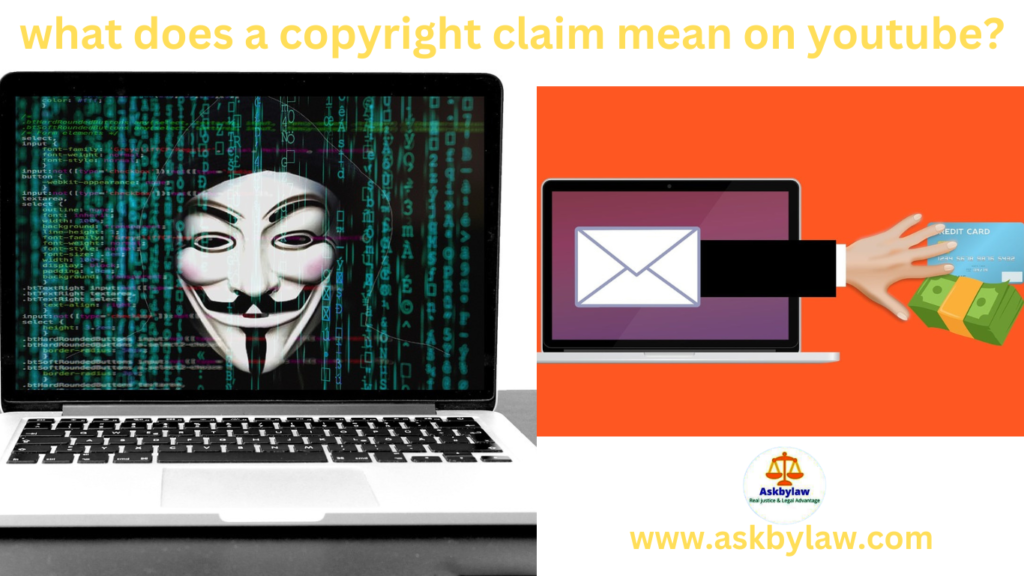
Have you uploaded some videoes to YouTube every day, only to find out that you have been sued by the copyright holder?
If, the said has happened to you, know that you are not alone. And claiming copyright claims are a common occurrence on YouTube, and they can be confusing for creators.
In today's blog, we discuss with you what is a copyright claim? How does it work? Also, What can you do if your video gets sued? We will provide information and explain it to you. We'll give you useful tips on "how to avoid copyright claims in the future"
Whether you're a new YouTuber or a Seasoned person. Read on to learn more about copyright claims on YouTube. Learn more about copyright claims on YouTube and protect your videos from copyright stress by reading our blog.
Subscribe to our blog for more tips on how to legally create and manage your YouTube channel well. Any copyright claim is a notice from YouTube that your video contains copyrighted material.
Any copyright claims may affect your ability to monetize your videos. There are two types of such copyright claims: Content ID claims and manual claims.
After the above discussion if you believe that your video does not infringe copyright. So there may be a copyright claim dispute for your channel. So you can take quick steps to avoid copyright claims on YouTube.
Did you aware that about 80% of YouTube video content that is protected by copyright? There are a lot of possible copyright claims there!
Learn how to comprehend copyright assertions on YouTube. We discuss with you. How to respond to them? And. How to prevent them in the future, in this blog post?
Understanding copyright assertions are crucial since they can have a significant impact on your YouTube channel. Continue reading to find out more about YouTube copyright issues and how to safeguard your channel. Also, take safety precautions for yourself.
I hope the said blog post is useful.
Whether are you a new YouTuber or a seasoned Professional? Read on to know more about copyright claim on YouTube.
Copyright claims are a common occurrence on YouTube, but how do they actually work? We'll look more closely at copyright allegations on YouTube in this section.
Including the role of YouTube's Content ID system, the process for filing a copyright claim. And the different types of copyright claim.
By understanding how copyright claims work, you'll be better equipped to protect your own content and deal with copyright claims filed against your videos.
A copyright claim can have a serious impact on your YouTube channel. Therefore, it's crucial to comprehend them and take precautions for your safety.
Continue reading to find out more about copyright disputes on YouTube and how to safeguard your channel.
YouTube's Content ID system is a tool that helps identify potential copyright violations. It works by scanning videos uploaded to YouTube to match copyrighted content that is registered with Content ID. If a match is found, the copyright holder can choose to claim the video. Which will give them exact control over how the video is used?
If you believe that your copyright has been violated on YouTube. You must file a copyright claim. The procedure for filing a copyright claim is relatively straightforward. You'll require to provide some basic information about the copyrighted material by you believe has been infringed, as well as the URL of the video you're claiming.
There are three main types of copyright claim on YouTube: first manual claim, second Content ID claim, and last third-party claim. Manual claims are filed by copyright holders who have not registered their content with Content ID. Content ID claims are filed by copyright holders who have registered their content with Content ID. A third-party claim is filed by companies that have been authorized by copyright holders to act on their behalf.
Copyright claims are common on YouTube. But, what are some of the most common scenarios that could lead to a copyright claim? The most frequent scenarios that can result in copyright claims are discussed in this section, including the unauthorised use of music, photographs, or video clips. We will also discuss the implications of fair use and transformative content on copyright claims.
By understanding the most common scenarios that can lead to copyright claims, you'll be better equipped to protect your own content and avoid copyright claims filed against your videos.
Copyright claims can seriously impact your YouTube channel, so it is important to understand the most common scenarios that can lead to copyright claims, and take steps to avoid them.
Fair use is a legal principle to permits limited use of copyrighted material without the permission of the copyright owner. Mutable material is material that has changed significantly from its original form, in some cases. Fair use and transforming content can protect you from copyright claims. However, it is important to consult with an attorney to determine whether your use of copyrighted material falls under fair use.
Read on to learn more about the most common scenarios that can lead to copyright claims on YouTube and how to avoid them.
• Some of the most common scenarios that can lead to copyright claims include:
• Using copyrighted music without permission or attribution.
• Using copyrighted images or video clips without permission or attribution.
• Sampling copyrighted music without permission or attribution.
• Creating a derivative work of copyrighted material without permission.
I hope this helps!
Copyright claims can have a significant impact on your YouTube channel. In this section, we'll discuss the consequences of receiving a copyright claim on YouTube, including potential consequences, such as video removal, copyright strikes, and channel fines. We will also highlight the importance of responding promptly and appropriately to copyright claims.
By understanding the impact of copyright claims, you will be better equipped to protect your own content and deal with copyright claims filed against your videos.
Copyright claims can have a serious impact on your YouTube channel, so it's important to understand the potential consequences and respond to copyright claims promptly and appropriately. Read on to learn more about the impact of copyright claims on YouTube and how to protect your channel.
If you receive a copyright claim on YouTube, there are several possible consequences. A copyright holder may choose:
Monetize your video and share revenue with the copyright holder.
If you receive a copyright claim, it's important to respond immediately. You can dispute the claim or accept it. If you dispute the copyright claim on YouTube, you will need to provide evidence to support your claim. If you accept the claim, your video will be affected as the copyright holder chooses.
If you receive three copyright strikes within a 90-day period, your channel will be terminated. This means that all your videos will be removed from YouTube and you will not be able to create a new channel.
In addition to copyright strikes, YouTube can also impose other penalties on your channel, such as:
Responding to copyright claims in a timely manner is important. If you do not respond to a copyright claim on YouTube within 30 days, the copyright holder may choose to remove your video or monetize your video without your permission.
• Reduced monetization opportunities.
• Restrictions on live streaming.
• Limitations on the ability to upload videos.
If you receive a copyright claim, it is important to respond promptly and appropriately. You should first review the claim to see if you believe it is valid. If you believe the claim is invalid on the basis of evidence, you can dispute the claim. If you believe the claim is valid, you can accept the claim or negotiate with the copyright holder. I hope this helps!
Copyright claims can have a significant impact on your YouTube channel. In this section, we'll discuss the consequences of receiving a copyright claim on YouTube, including potential consequences, such as video removal, copyright strikes, and channel fines. We will also highlight the importance of responding promptly and appropriately to copyright claims.
By understanding the impact of copyright claims, you will be better equipped to protect your own content and deal with copyright claims filed against your videos.
Copyright claims can have a serious impact on your YouTube channel, so it's important to understand the potential consequences and respond to copyright claims promptly and appropriately.
Read on to learn more about the impact of copyright claims on YouTube and how to protect your channel.
If you receive a copyright claim on YouTube, there are several possible consequences. A copyright holder may choose:
• Upload your video.
• Monetize your video and share revenue with the copyright holder.
• Block your video in certain countries.
If you receive a copyright claim, it's important to respond immediately. You can dispute the claim or accept it. If you dispute the claim, you will need to provide evidence to support your claim. If you accept the claim, your video will be affected as the copyright holder chooses.
If you receive three copyright strikes within a 90-day period, your channel will be terminated. This means that all your videos will be removed from YouTube and you will not be able to create a new channel.
In addition to copyright strikes, YouTube can also impose other penalties on your channel, such as:
If you receive a copyright claim, it is important to respond promptly and appropriately. You should first review the claim to see if you believe it is valid. If you believe the claim is invalid on the basis of evidence, you can dispute the claim. If you believe the claim is valid, you can accept the claim or negotiate with the copyright holder. Responding to copyright claims in a timely manner is important. If you do not respond to a copyright claim within 30 days, the copyright holder may choose to remove your video or monetize your video without your permission. I hope this helps!
GET IN TOUCH
Copyright claims can be a headache. But they don't have to be, we will walk you through the steps on how to respond to a copyright claim on YouTube. We will discuss available options, such as disputing the claim, seeking permission, or removing the disputed content. We will also explain the process of filing a counter-notice and its possible consequences.
By understanding the steps to resolve copyright claims, you will be able to protect your own content and combat copyright claims filed against your videos.
Copyright disputes can negatively affect your YouTube channel, so it's critical to know how to handle them and to respond quickly. Continue reading to find out more about resolving copyright disputes on YouTube and safeguarding your channel.
There are numerous actions you can take to settle a copyright claim you get on YouTube:
Remove disputed content. If you do not wish to dispute the claim or seek permission, you may remove the disputed content from your video. This will remove the copyright claim, but it will also remove the content from your video.
First, you need to review the claim to see if you believe it is valid. If you believe the claim is invalid, you can dispute the claim.
If you dispute the claim, you will require providing evidence to support your copyright claim on YouTube. You can do this by providing a link to the original source of the content or by explaining how your use of the content falls under fair use.
If you believe the claim is valid, you can obtain permission from the copyright holder to use their content. You can do this by contacting the copyright holder directly or by using YouTube's Content ID match tool. Enter a counter-notification. If you dispute a copyright claim and the copyright holder doesn't respond, you can file a counter-notice. This will allow you to restore your video and keep monetizing it.
If you issue a counter-notice, you will require providing specific information, including your contact information, the URL of the claimed video, and a statement that you believe the claim is invalid. You will also need to swear or affirm that the information you are providing is accurate.
If the copyright holder does not respond to your counter-notice within 10 business days, your video will be reinstated and you will be able to keep monetizing it. If the copyright holder responds, they can file a lawsuit against you. I hope this helps!
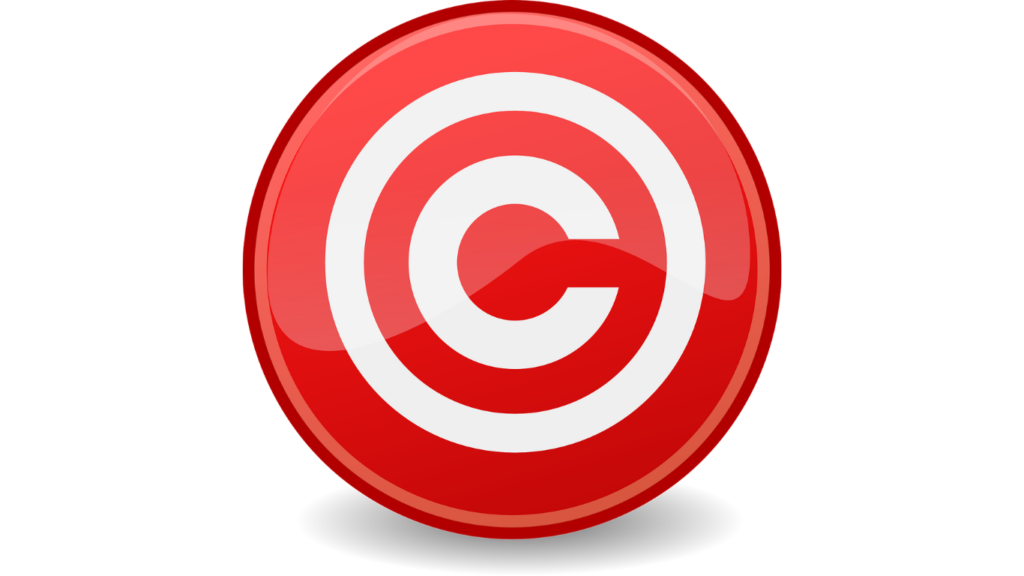
Your video's power to earn you money is gone.
First, you. Sign in to YouTube Studio. From the left menu than after selecting Copyright and Click New Removal request
Copyright protection applies to works created after January 1, 1978, and listen to you it is valid for the author's lifetime plus an extra 70 years.
Listening to you carefully, No. The only thing that will delete the claim is deleting the copyrighted content.
Hear to carefully. Deleting a video doesn't make the copyright claimant or copyright strike go away
In this blog post, we have discussed the basics of copyright claims are on YouTube. We've covered what copyright claims, how they work, and the potential consequences of receiving a copyright claim. We've also discussed steps you can take to resolve copyright claim on youtube.
We hope this blog post has been informative: If you, have any questions or doubt about copyright claims on YouTube, please feel free to comment below.
A copyright claim is a notification from YouTube that your video contains copyrighted material.
Copyright claims can have a significant impact on your YouTube channel.
There are three main types of copyright claims on YouTube: manual claims, Content ID claims, and third-party claims.
You can dispute a copyright claim, get permission from the copyright holder, or remove the disputed content from your video.
If you receive a copyright claim, it is important to respond promptly and appropriately
If you file a counter-notice, the copyright holder has 10 business days to respond. If they don't respond your video will be reinstated
In order to protect your content, it is important to be aware of copyright laws and policies. You may contact the YouTube Copyright Center and the U.S. You can do this by visiting the Copyright Office website. We encourage you to share your experiences with copyright claims on YouTube in the comments section below. We'd also love to hear your questions about copyright claims.
#Copyrightstrike #YouTube copyright #YouTubecopyright infringement #YouTube copyrightclaimprocess #YouTubecopyrightclaimappeal #YouTubecopyrightclaimconsequences #YouTubecopyrightclaimmonetization #avoidcopyrightclaimYouTube #PreventcopyrightclaimYouTube, #ProtectyourcontentonYouTube #CopyrightclaimvsCopyrightstrike #YouTubecopyrightclaim vs copyrightstrike #CheckcopyrightclaimYouTube
As per the foundations of the Bar Council of Bharat (India), Advocate Viren.S.Dave isn't permissible to solicit work and advertise. By clicking the “Agree” button and accessing this web site (www.asklbylaw.com) the user absolutely accepts that you just Maineasure seeking info of your own accord and volition which no kind of solicitation has taken place by me.The info provided below this web site is exclusively accessible at your request for information functions solely. It mustn't be understood as soliciting or advert. Advocate Viren.S.Dave isn't accountable for any consequence of any action taken by the user hoping on material / info provided below this web site. In cases wherever the user has any legal problems, he/she altogether cases should obtain freelance legal recommendation.